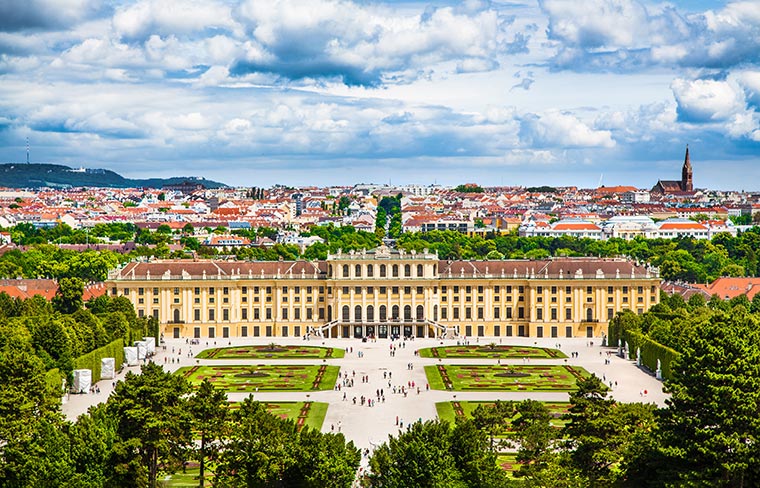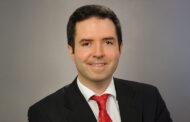Powerful monarchs, music legends, and groundbreaking scientists have shaped the cultural legacy of Vienna. The city is home to countless institutions ranging from the cultural and scientific to the more off-beat.
Andreas Tiefenbacher, a medical resident at the Medical University of Vienna, highly recommends the Narrenturm, which is both scientific and a bit off-beat. It was founded in 1784 as Europe’s first asylum for mentally ill people.
“The building is now housing a unique pathological-anatomical collection of all kinds of conditions,” said Dr. Tiefenbacher. “I recommend a guided tour.”
He also suggested Haus der Musik, an interactive sound museum covering historical and scientific aspects of sounds and music.
“It’s perfect to explore on your own in a playful way,” said Dr. Tiefenbacher.
If you’re looking for more mainstream historical sites, start with the Hofburg-Imperial Palace, one of the largest palace complexes in the world. It offers glimpses of the official chambers of Emperor Franz Joseph and Empress Elisabeth, the imperial silver collection, Spanish riding school and the Sisi Museum which features personal objects and portraits of Empress Elisabeth.
Vienna is also home to Schönbrunn Palace, former summer residence of the Habsburgs,and widely considered one of Europe’s most beautiful Baroque complexes. Dating to 1696 this UNESCO World Heritage site has 1,441 rooms. The sculpted gardens also include a zoo and orangery.
The MuseumsQuartier Wien features 60 cultural institutions making it one of the world’s largest art and cultural areas where, according to its website, “historic architecture meets contemporary design, high culture meets subcultures.”
Vienna has its fair share of art museums including those focused on more traditional collections like the Kunsthistorisches Museum, Vienna’s Museum of Fine Art. It houses collections of the Habsburgs, Emperor Rudoph and Archduke Leopold Wilhelm. Emperor Franz Joseph I opened the museum in 1891, at the same time as the Natural History Museum, Vienna which has a similar design and is located directly across Maria-Theresien-Platz. The Natural History Museum has 39 exhibition rooms containing more than 100,000 objects related to human, earth, and life sciences.
The Belvedere in Vienna features works from the Middle Ages to the present day, and includes the world’s largest collection of Gustav Klimt paintings as well as prominent works from the Viennese Biedermeier period, Austrian Baroque, the Vienna era around 1900 and French Impressionism.
According to The Art Newspaper, the Albertina museum is among the world’s most visited art museums and has one of the largest and most important print rooms in the world, with close to 65,000 drawings and 1 million old master prints. It also has two collections of early 20th century and Impressionist art.
Its sister, the Albertina Modern is one of Austria’s newer art museums for world-class modern and contemporary art. It focuses on international art and the diversity of post-1945 contemporary art from Austria. Its collection of more than 60,000 works by 5,000 artists ranks it among the world’s largest museums of modern and contemporary art.
The Heidi Horten Collection, a private museum that opened earlier this year, offers three floors of gallery space with two futuristic floating platforms. It showcases works by the likes of Robert Rauschenberg, Andy Warhol, Dan Flavin, and Damien Hirst as well as less-established figures including emerging and mid-career Austrian artists. Entry requires a time-slot ticket which can be purchased here.
The Weltmuseum Wien features some of the world’s most important non-European collections of objects dedicated to a better understanding of individual cultures or regions of the world. It compares and connects the range of human cultural formations.
If you’re looking for a bit of psychoanalysis—or the birthplace of it, anyway—pay a visit to the Sigmund Freud Museum, where the Austrian neurologist and the father of psychoanalysis lived and worked from 1891 to 1938. Freud wrote his greatest works in this classic Viennese tenement, which houses his Library of Psychoanalysis.
And if you’re looking to view more of those offbeat collections between sessions, check out this list of seven unusual museums that focus on such quirky topics as torture, chimney sweeps, and clocks. The website Vienna Now & Forever also has a comprehensive list of things to do and see.






